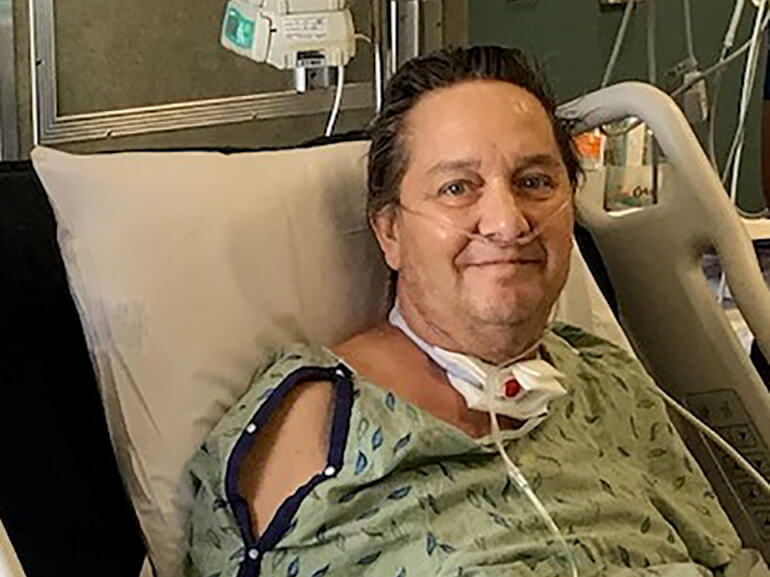Clark Ortiz's Story

As a surgical technologist, Clark Ortiz was on the front lines of the nation’s battle against COVID-19.
In June, the 57-year-old was at work when he began feeling short of breath. Clark took himself down to the emergency room, where he fell into respiratory failure. Tests revealed he’d contracted COVID-19 as well as pneumonia.
Shortly thereafter, Clark lapsed in and out of consciousness. He remembers blood draws and that being unable to breathe “felt like drowning.” At that point, he was sedated and placed on a ventilator.
As Clark’s condition worsened, he was transferred from the hospital near Lake Havasu City to Banner University Medical Center in late July.
For a month, Clark fought to overcome the virus’ devastating effects. By September, to his wife Suzanne’s relief, he turned a corner. For the next step in his recovery, she chose Select Specialty Hospital – Downtown Phoenix.
Clark arrived in early September, unable to move, speak or breathe on his own.
A physician-led team of nurses, therapists, pharmacists and dietitians created an individualized treatment plan to help Clark heal.
Respiratory therapists began trialing bursts of time off the ventilator and led breathing and chest exercises.
Simultaneously, physical and occupational therapists partnered with nurses on a mobility program. This series of small exercises – sitting in bed, moving to its edge and into a chair – performed twice a day has been shown in some studies to help ventilated patients liberate.
As Clark’s lungs grew stronger, he successfully liberated from the breathing machine.
Graduating to the next stage in the mobility program, Clark spent more time sitting in a chair and began attempting to get out of bed under therapist supervision.
Physical therapists also led exercises to strengthen lower extremities. By month’s end, Clark could sit, pivot and stand.
Occupational therapists then worked to build Clark’s upper body strength and dexterity, incorporating daily living tasks into his routine. He regained the ability to hold utensils and button a shirt. As stamina increased, Clark showered with supervision.
Speech language pathologists then stepped in with verbal and cognitive exercises to sharpen critical thinking and memory skills. They also led mouth, tongue and jaw exercises to restore Clark’s swallowing reflexes.
After passing a study indicating he could swallow safely, the feeding tube was removed and dietitians crafted a meal plan transitioning Clark to a regular diet.
By early October, he was one step closer to home. Clark was discharged to a skilled nursing facility to regain additional living skills before returning to Suzanne.